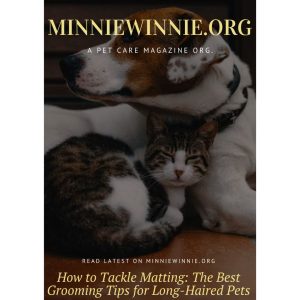Tips for Reducing Shedding in Dogs and Cats
Shedding is a natural process in dogs and cats, where they lose old or damaged hair to make room for new growth. While it’s normal for pets to shed, excessive shedding can be a nuisance, leaving fur all over your home and potentially signaling underlying health issues. Here are some effective tips to help manage and reduce shedding in your furry companions.
1. Regular Grooming
Regular grooming is essential in managing shedding. Brushing your dog or cat daily helps remove loose fur before it falls off and lands on your furniture or floors. The type of brush you use depends on your pet’s coat:
- For short-haired breeds: A rubber curry brush or a grooming glove works well to remove loose hair and stimulate the skin.
- For long-haired breeds: A slicker brush or a wide-toothed comb is ideal for detangling and removing loose fur.
In addition to reducing shedding, regular grooming improves your pet’s coat health, promotes better circulation, and allows you to spot any skin issues early.
2. Proper Nutrition
A balanced diet plays a crucial role in maintaining your pet’s coat health. Dogs and cats require specific nutrients to keep their fur shiny and minimize shedding. Omega-3 and Omega-6 fatty acids, commonly found in fish oil and flaxseed, are particularly beneficial for skin and coat health. Ensure your pet’s diet includes:
- High-quality proteins: Proteins are vital for fur growth, and a lack of them can lead to dry, brittle hair and increased shedding.
- Essential fatty acids: Incorporate Omega-3 and Omega-6 fatty acids to support a healthy coat.
- Vitamins and minerals: Vitamins A, E, and zinc are important for skin health and can reduce excessive shedding.
If you’re unsure about your pet’s diet, consult with your veterinarian for guidance on the best food and supplements.
3. Hydration
Dehydration can cause dry skin, leading to increased shedding. Ensure your dog or cat has access to fresh water at all times. Some pets are picky about drinking water, so you might consider using a pet water fountain to encourage them to drink more. Wet food can also contribute to their overall hydration.
4. Regular Bathing
Bathing your pet regularly can help manage shedding by removing loose fur and keeping the skin clean. However, it’s important not to overdo it, as excessive bathing can strip natural oils from the skin, leading to dryness and more shedding.
- For dogs: Bathe them once a month or as needed with a gentle, pet-specific shampoo. If your dog has sensitive skin, opt for a hypoallergenic shampoo.
- For cats: Cats are generally self-cleaning and don’t need frequent baths, but a bath every few months can be beneficial, especially for long-haired breeds.
After bathing, thoroughly dry your pet and brush them to remove any loose fur.
5. Control Parasites
Parasites like fleas, ticks, and mites can irritate your pet’s skin, leading to excessive scratching and shedding. Regularly check your dog or cat for signs of parasites, especially during warmer months. Use veterinarian-recommended flea and tick preventatives and keep your home clean to reduce the risk of infestation.
6. Manage Stress
Stress can contribute to excessive shedding in both dogs and cats. Changes in the environment, loud noises, or separation anxiety can all trigger stress-related shedding. To help reduce stress:
- Provide a safe space: Ensure your pet has a quiet, comfortable area where they can retreat when feeling stressed.
- Maintain a routine: Pets thrive on routine, so try to keep feeding, exercise, and playtime consistent.
- Use calming products: Consider using pheromone diffusers, calming collars, or anxiety wraps to help soothe your pet.
7. Regular Vet Check-Ups
Sometimes, excessive shedding can be a sign of underlying health issues, such as allergies, hormonal imbalances, or skin infections. Regular vet check-ups are essential for identifying and addressing these problems early. If you notice sudden or unusual hair loss in your pet, consult your veterinarian for a thorough examination and treatment plan.
8. Use the Right Tools
Investing in the right grooming tools can make a significant difference in managing shedding. Deshedding tools, like the Furminator, are designed specifically to remove loose fur from the undercoat without damaging the topcoat. These tools are especially effective during seasonal shedding periods when your pet’s coat changes.
Conclusion
Shedding is a natural part of pet ownership, but with the right care, it doesn’t have to be overwhelming. By incorporating regular grooming, proper nutrition, hydration, and stress management into your pet’s routine, you can significantly reduce shedding and keep your home fur-free. Always consult with your veterinarian if you have concerns about your pet’s shedding or overall health. A little proactive care goes a long way in ensuring your dog or cat has a healthy, shiny coat.










